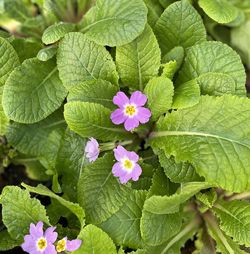Gladiolus
Sword Lily
These are not the easily obtainable hybrids—you can find those elsewhere. The beauty of our native South African selections comes from the handsome sword-shaped leaves and spikes of unfussy, often flaring blooms.
Belonging to the Iridaceae family, Gladioli have long been associated with strength of character, and we think its strongly upright, yet graceful presence can fashion an intriguing see-through veil for any border. Place them in a well drained site and, after the bloom is over, support strong corm development by reducing water and trimming the stems to just beneath the lowest flowers. Provide winter protection in colder areas.
Each $11.50
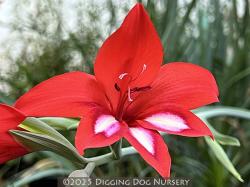
You can almost feel the heat as floriferous spikes sizzle with colorful intensity while stiff, ribbed Crocosmia-like blades stand in composed relief. Three white patches daringly dash across the lower petals, illuminating vividly hued cardinal-red flowers.
Seeking out moist niches, sometimes under waterfalls in its indigenous Drakensberg Mountains, this vigorous temptress tolerates summer water, makes an excellent garden plant for warmer climates and can be grown in a favored patio container where winters are cold.
Blooms June–August.
Size: 2-1/4' high x 10" wide.
Hardy to zone 8.
OUT OF PRODUCTION AT THIS TIME
Email me when this plant is available
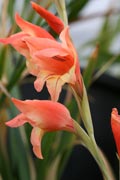
Reminiscent of Halloween candy corn colors and nearly in time for that high-spirited tradition, this South African’s 3 ft. tall flowering spires deliver an alluring display. Grounded by straplike blades reaching up to 2 ft., the ample, well spaced blooms feature pendant, hooded orange petals glowing with yellow throats.
Full of vigor, easy-to-maintain and actively growing in summer, Gladiolus dalenii should receive adequate water throughout the season.
Blooms September–October.
Size: 2' 0" – 3' 0" high x 2' 0" – 3' 0" wide.
Hardy to zone 8.
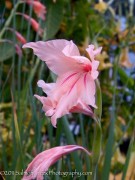
Native to the grassy cliffs of the Drakensberg Mountains, this high altitude Gladiolus possesses a robust hardiness that defies the exquisite beauty of its flowers.
Ruffled in pretty salmon-pink colors, the showy, 4 in. flared blooms exhibit dark pink-streaked lower petals, and are openly arranged on long slender stems above grassy blades. Appreciative of summer moisture, this lovely bulb flourishes in ordinary garden soil.
Blooms August–September.
Size: 2' 0" – 3' 0" high x 10" wide.
Hardy to zone 6.
Each $11.50
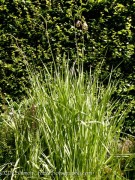
Emerging from a swordlike cluster of light green leaves, the arching bronzy stems host numerous slender green and mauve buds, which open into funnel-shaped blossoms distinguished by a soft gray and dusty purple hue on the outside. A subtle gift inside awaits your glance: mothlike markings of maroon and gold decorate the lower milky colored petal segments.
Let a drift of these delicacies accompany Galtonia viridiflora and Kniphofia linearifolia and enjoy their quiet elegance.
Blooms August–September.
Size: 3-1/2' high x 12" & spreading wide.
Hardy to zone 7.
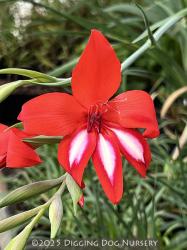
A spectacular AGM winner, this 1958 corm-forming hybrid flaunts vibrant magenta-red blooms that are painted with luminous white streaks towards the base of each petal. The faintly fragrant, loosely arranged blooms festoon upright slender spires above compact sword-shaped grayish-green leaves. Heroically resisting verticillium wilt, cut-flower-perfect ‘Robinetta’ lends boundless pizazz to beds, borders, cottage gardens and containers, where it enjoys sun, winter mulch and excellent drainage.
Blooms August–September
Size: 18" – 2' 0" high x 8" wide.
Hardy to zone 7.
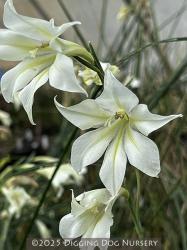
So dainty and exquisite, this South African native is one of our favorite spring blooming bulbs. Rising from a stand of tall, rushlike narrow leaves, each flowering wand produces a trio of upturned, creamy yellow, tubular blossoms. Stippled with bronze and green, the large and lovely, flared flowers give off a sweet almond scent. For an untamed look, plant amidst grasses such as Sesleria and Miscanthus ‘Little Kitten’ or for contrasting foliage try Euphorbia ‘Blue Haze’.
Blooms April – May.
Size: 3' 0" – 12" high x 0" wide.
Hardy to zone 8.










